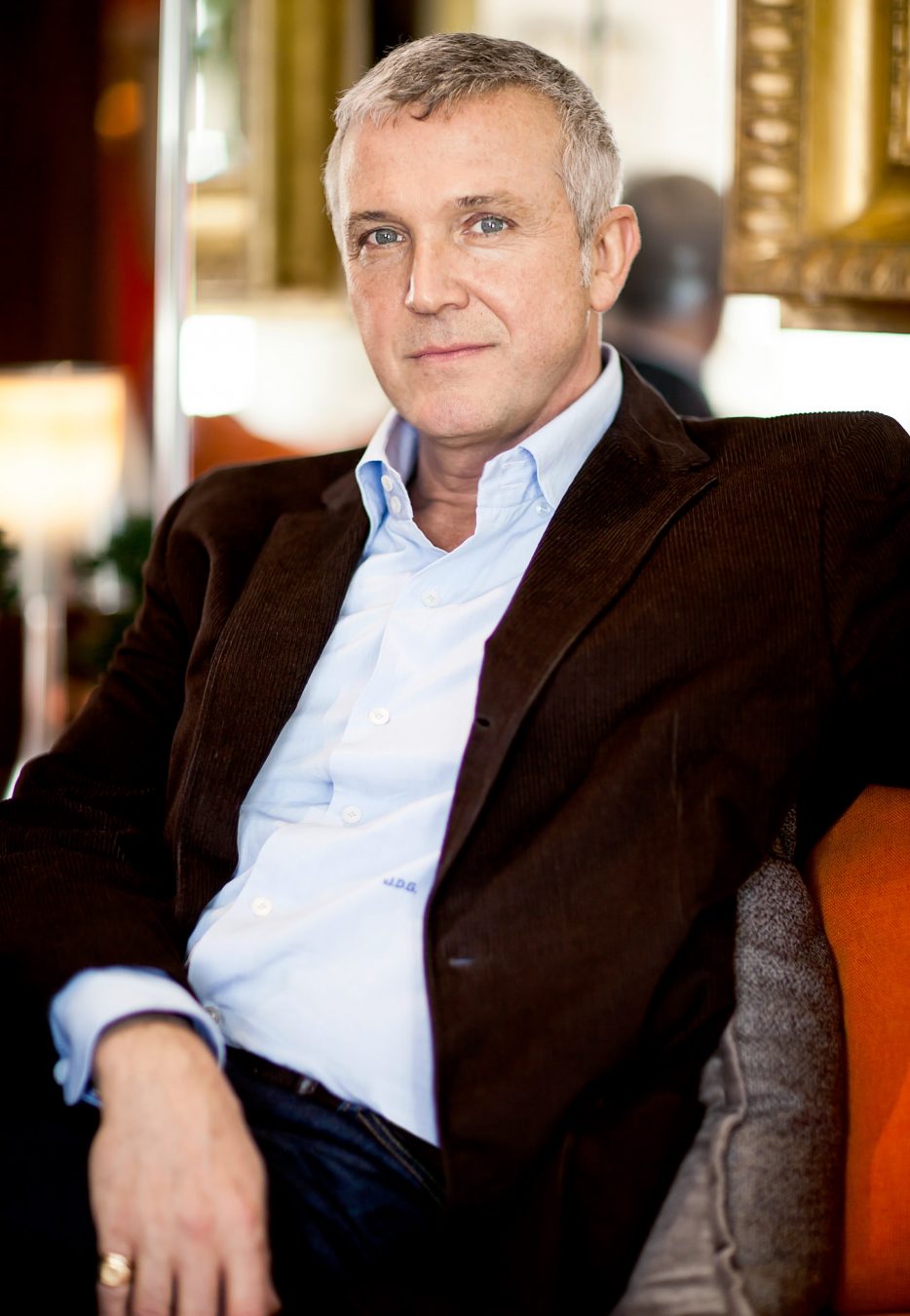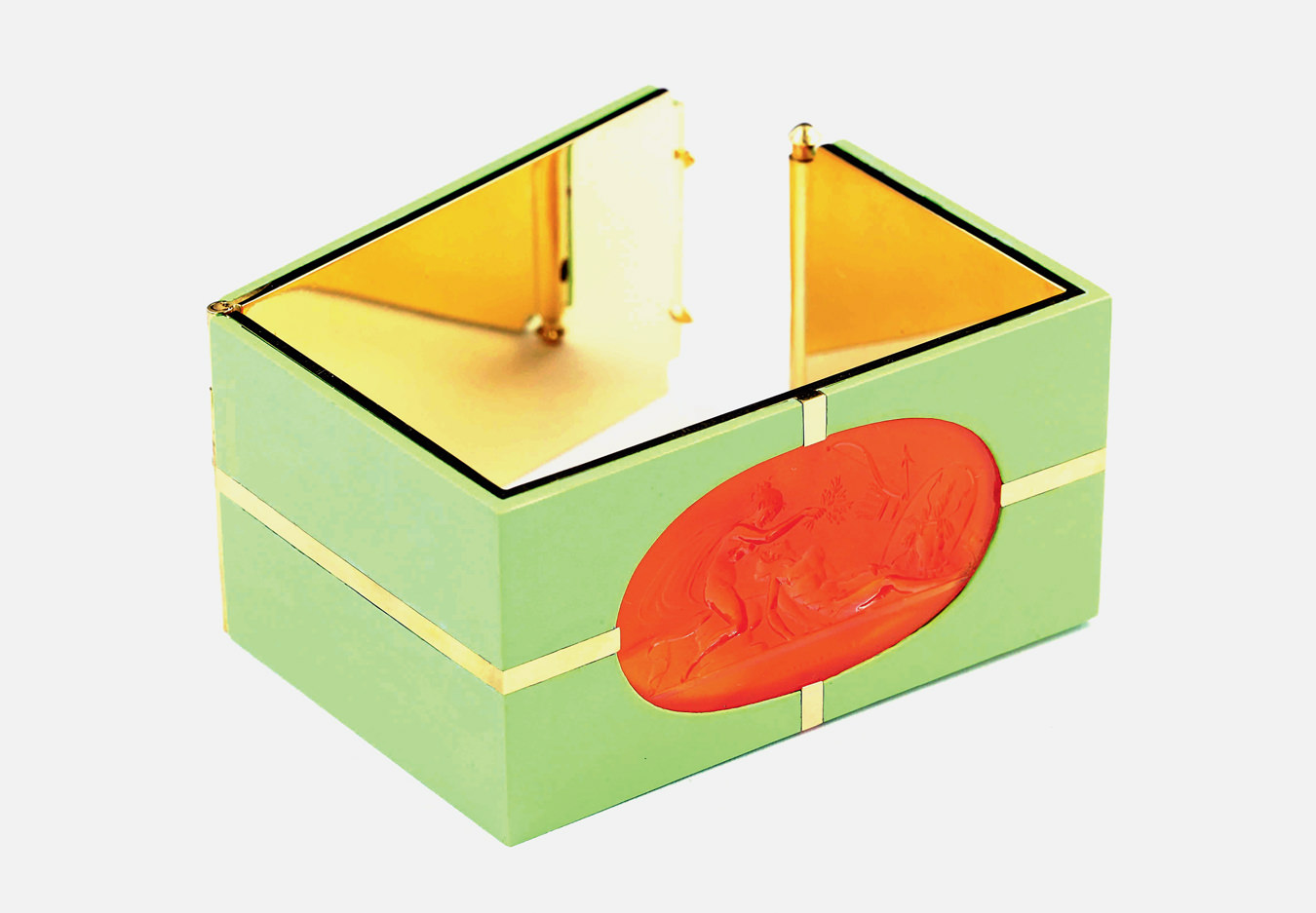There was a time when James Taffin de Givenchy thought he would work in luxury fashion. After all, it is how his uncle, the iconic Hubert de Givenchy, became famous, propelling the family name into couture stardom. Growing up in Beauvais, France, de Givenchy—as in James—eventually grasped the weight of his last name, but instead of inspiring him to join the business (where his father also worked, as head of the perfume and couture factories), it made him question his place.
“It was not an easy thing because you’re never as good as he is,” de Givenchy says of his uncle. “There was one Givenchy, and there was only going to be one.” So he moved to New York to study graphic design at the Fashion Institute of Technology, and eventually landed a job in the Christie’s jewellery department, where he swooned. “I fell in love with the stones; I thought they were the most interesting things,” says de Givenchy. “When I was growing up I used to collect stones, different large specimens and other things I could find. It was kind of serendipitous when I saw those diamonds and saw those emeralds.” In 1996, his passion culminated in the form of his own tailored jewellery line: Taffin.
Now 20 years in, de Givenchy speaks with the ease of someone who knows what he is doing—someone who is comfortable with his skillset, and is not afraid to speak freely. Taffin’s production is made up of a small amount of collection pieces and majority custom ones; every item is created by a small staff of 10 in his New York atelier, which sits in a Madison Avenue building below his sienna-orange-accented showroom. The designs are playful and vibrant, a mix of costume and couture; pieces are often geometric and out of the ordinary, utilizing ceramic for pops of colour. “I think jewellery should be modern, wearable, unpretentious, and yet precious,” explains de Givenchy, who has also worked as vice-president at Verdura and creative director of Sotheby’s Diamonds. “I just want to make sure people realize that jewellery is a form of art, and should be art on the finger. It’s something you wear all the time, so it has to be much more flexible than art that just hangs on the wall or sits on the floor—it has to have a function. So it’s a really interesting art form.”
There are, however, some pieces that de Givenchy designs without utility in mind—some structures speak to him on a higher level. “Some of it is meant to be worn and some of it really as objet,” he explains, reclining on a sofa in his showroom as a Red Hot Chili Peppers song plays in the background. He mentions a bracelet with a Poniatowski agate intaglio set in ceramic and gold—completely rigid in its rectangular shape, it can indeed fit on the wrist, but is more suited for display. “I’m not making it thinking I have a client in mind, I’m just making it because I think it’s a really beautiful way to display the cameo that’s in the middle, and I like to look at the piece,” de Givenchy says. “It’s really more for me.” But there is plenty for his clients as well, and his little studio is kept busy year-round with custom redesigns and bespoke creations.
Of course, the trials and tribulations along the way were abundant. “When I was growing up in France, people would say, ‘You’re trying to use your name to get ahead, but you don’t have the talent,’—even if they didn’t know me, it was, ‘You can’t be him,’” de Givenchy says, without a hint of bitterness. Alternatively, “when you arrive in America, people say, ‘Oh, you are related, therefore you must have the talent.’” It made him feel more confident in himself, a reassurance that has evidently stayed in his heart ever since. “I realized I was doing the things I always wanted to do,” de Givenchy says. His uncle was part of a family chain of grandparents and great grandparents who were painters and artists, and as such, de Givenchy’s own creative addition felt like “a continuation as opposed to a competition.”
Read more from our Design section.













